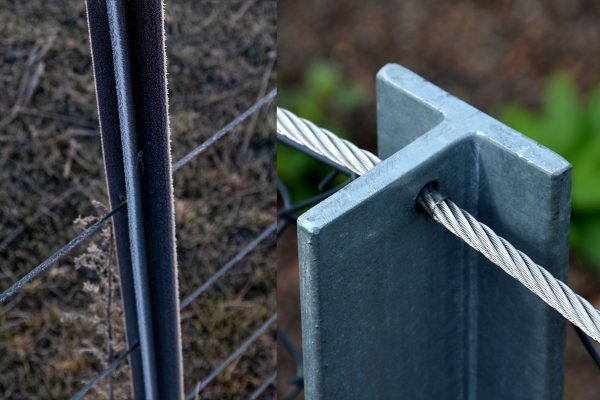You may want to install a fence post but wonder if you can pour the concrete when it is raining. Fortunately, we have done some research for you on this very question, and here's what we found.
It is not recommended to pour concrete for fence posts in the rain. Despite the various methods that can be used to pour concrete in the rain, it is better to wait for dry weather conditions. Pouring concrete can be time-consuming, so you'll want to be sure of an accurate result!
Some factors need to be considered before pouring concrete for fence posts when it is raining. Keep reading to get detailed information about the installation of fence posts.
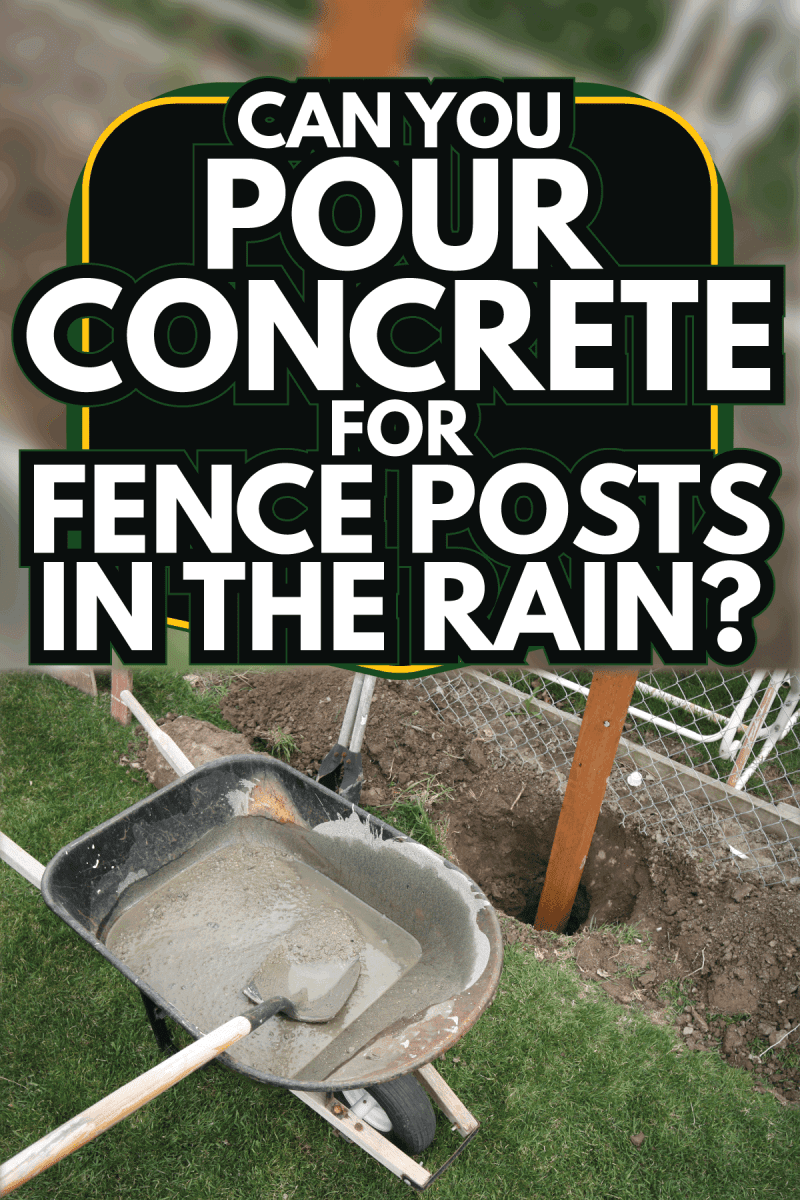
Posts: The Backbone of a Fence
A fence post is set in the ground to support the fence. It can be made from wood, metal, or other materials. It is usually installed with concrete.
The backbone of any fencing system is the post so it needs to be properly installed so the fence can last long. If the post is weak, your fence may not be able to withstand pressure and strong winds.
There are different types of fence posts that you can go for depending on your preference. Here are some of them:
Wood Posts
This is one of the most popular types of fence posts because it is stylish and affordable. But wood posts require a lot of maintenance since they can rot or get attacked by insects. They come in different sizes so you can easily find the one you need.
When choosing a wood fence post, you should consider the type of tree the post came from. Most wood fence posts are derived from pine. When treated well, they can be used for up to 30 years. Redwood and sweetgum also last long. Some species can last up to 25 years without treatment.
Metal Posts
This type of post is durable and can withstand extreme weather conditions. Metal posts can be used on uneven or sloped land. The major drawback of this post is that it is expensive and you may need an expert to help you install them properly.
Though metal is strong, it is not flexible. Whenever it bends, it is difficult to resume the original shape.
Aluminum Posts
This type of post is durable and affordable. Aluminum posts are stylish, attractive, and very easy to install. They are expensive but don't require a lot of maintenance.
Fence posts can be used for other things and not just supporting the fence. They can be used to hang plants or light. Make sure to install your fence posts properly because your fences depend on them.
Can You Pour Concrete For Fence Posts In The Rain?
Installing a fence post is quite easy and you can do it by yourself. When installing a fence post, avoid pouring the concrete in the rain. After all, for a fence post to stand the test of time, it needs to be solid.
In the making of fence posts, water is usually mixed with the concrete, and it is carefully measured to get the best result. However, extra rainwater may affect the strength of the concrete mix.
There are ways to go about pouring your concrete for fence posts when it is raining. But they are labor-intensive and may take time. It is best to wait till the rain stops so you can achieve strong support for your fence.
You don't want to get an unstable fence post after making so much effort to dig the hole and acquire the needed materials for the process. So, avoid pouring concrete for fence posts in the rain.
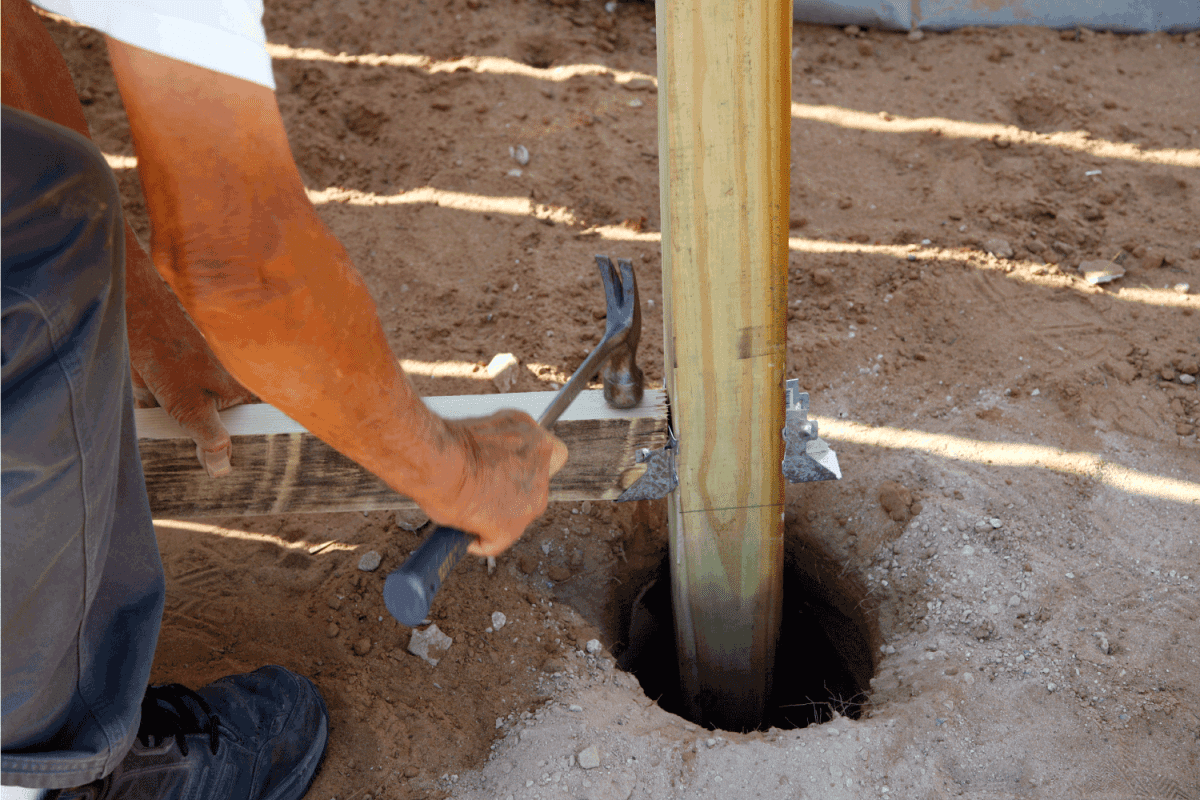
What Is The Best Temperature To Pour Concrete?
The ideal temperature to pour concrete is between 40° - 60°F. If the temperature drops below 40°F, the chemical reaction that makes concrete strong will slow down, thereby producing weaker concrete.
Also, if the temperature is below 40°F, the extra water inside the concrete may expand and this will cause the surface to crack.
When the temperature is higher than 60°F, the water in it will begin to evaporate and this will affect the integrity of the concrete. The best time to pour concrete is in the summer but the heat during this period can also be a problem.
What Happens If It Rains While Pouring Concrete?
When there is too much water in the concrete mix, it becomes weak. So, avoid pouring concrete on surfaces filled with water. How much the rain affects your concrete depends on the stage of the installation when the rain starts.
Protecting Concrete From Rain
If you want to install a fence post during the rainy season, make sure to get plastic sheets ready. This will serve as a shelter to cover the concrete if the rain starts when you are still pouring.
If you are pouring the concrete after the rain finishes, always direct any water away from the slab's edge before starting the process.
Can You Set Posts In Concrete When It Rains?
It is not recommended to set posts in the rain because a sudden downpour can affect the concrete. But if you must set a post when it rains, you need to get rid of the rainwater that has built-up in the posthole.
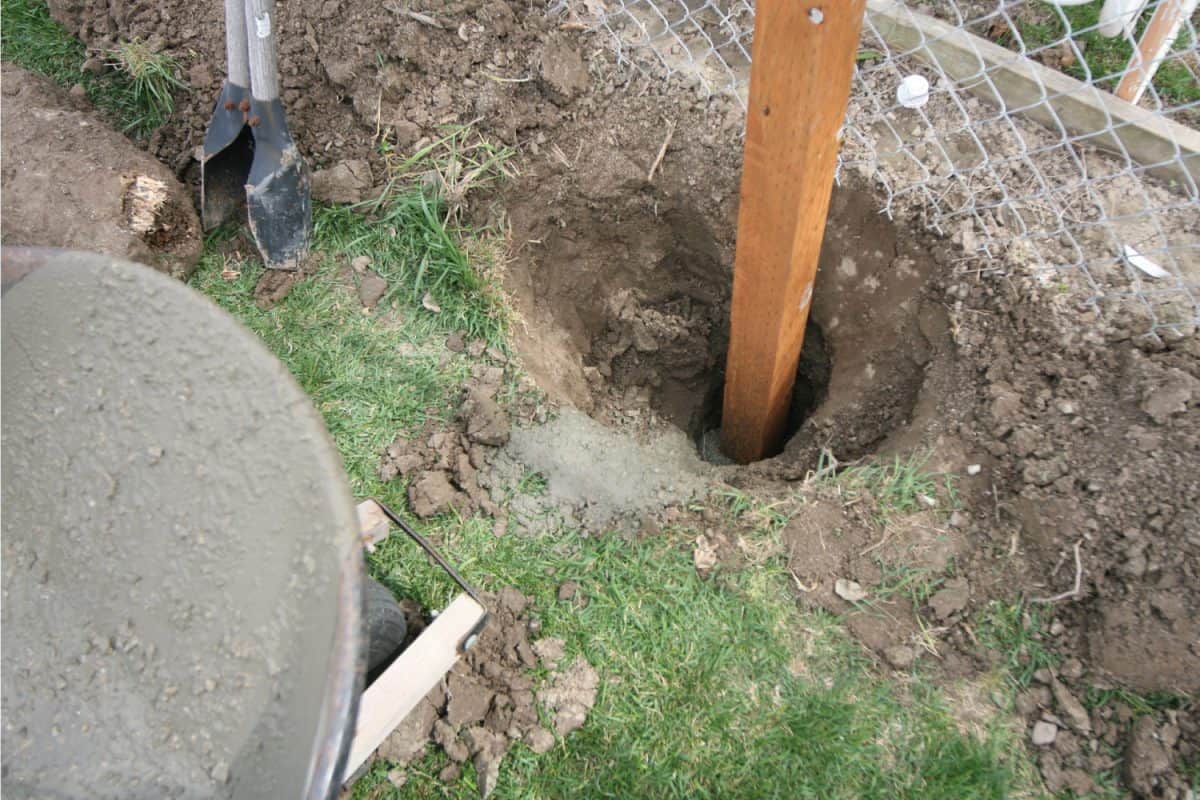
How To Remove Rainwater From Postholes With PVC Pipe
If the rainwater starts accumulating in the post hole, you can use a PVC pipe to enhance your post-setting process. The pipe will serve as a funnel that directs the concrete into the hole.
To do this, you need someone else to hold the post steady. Here are step-by-step procedures for getting rid of rainwater in a posthole with PVC pipe:
Step 1: Insert A PVC Pipe Into The Hole
Insert a PVC pipe that is about four feet long with a diameter of four to six inches into the hole. Then the second person should hold the pipe above the base of the hole - two inches is fine.
Step 2: Pack The Concrete Into The Pipe
Using a shovel, pack the concrete into the pipe. The concrete should spread out when it gets to the post hole. The rainwater will be forced up and out of the hole since the concrete is thicker than water.
Step 3: Move The Pipe Up
Next, gently move the pipe up for more concrete to enter. The pipe should always be two inches above the base of the hole. Stop adding more concrete when the pipe is three inches from the edge.
Step 4: Remove The Water
Remove any water from the top of the post hole with the shovel. After this, you can align the post and put some soil at the top of the hole before tamping with shovel.
If you don't want to undergo the process of removing the water, you can postpone the work to the next day. By then, the ground will be already dry and not soaked with water before setting the post.
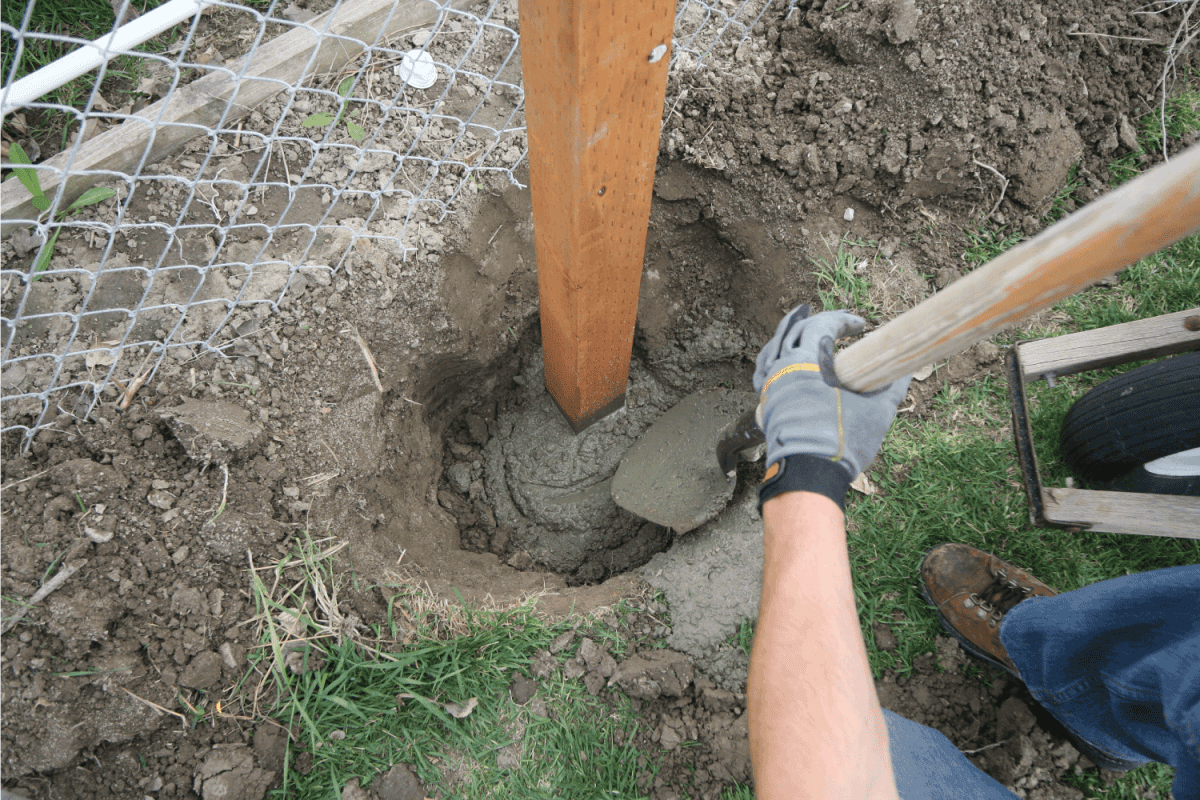
How Long Does Concrete Take To Set In A Post Hole?
It takes concrete 24 to 48 hours to set in a hole. Though, this depends on the type of environment in which the process is carried on. However, for concrete to get its complete strength, it may take 25 to 28 days, even before this time you can be able to work on it, just that it has not reached 70% of its full strength.
How Many Bags Of Concrete Do I Need For A Fence Post?
The amount of concrete needed for a fence post depends on how large the post hole and the fence post are. Generally, the number of concrete bags that will be needed for a fence post hole to be secured is one to four bags.
To determine the size of the post hole, you have to note that the diameter of the hole is triple the post's width. The depth is 1/3 to 1/2 from the post's ground height.
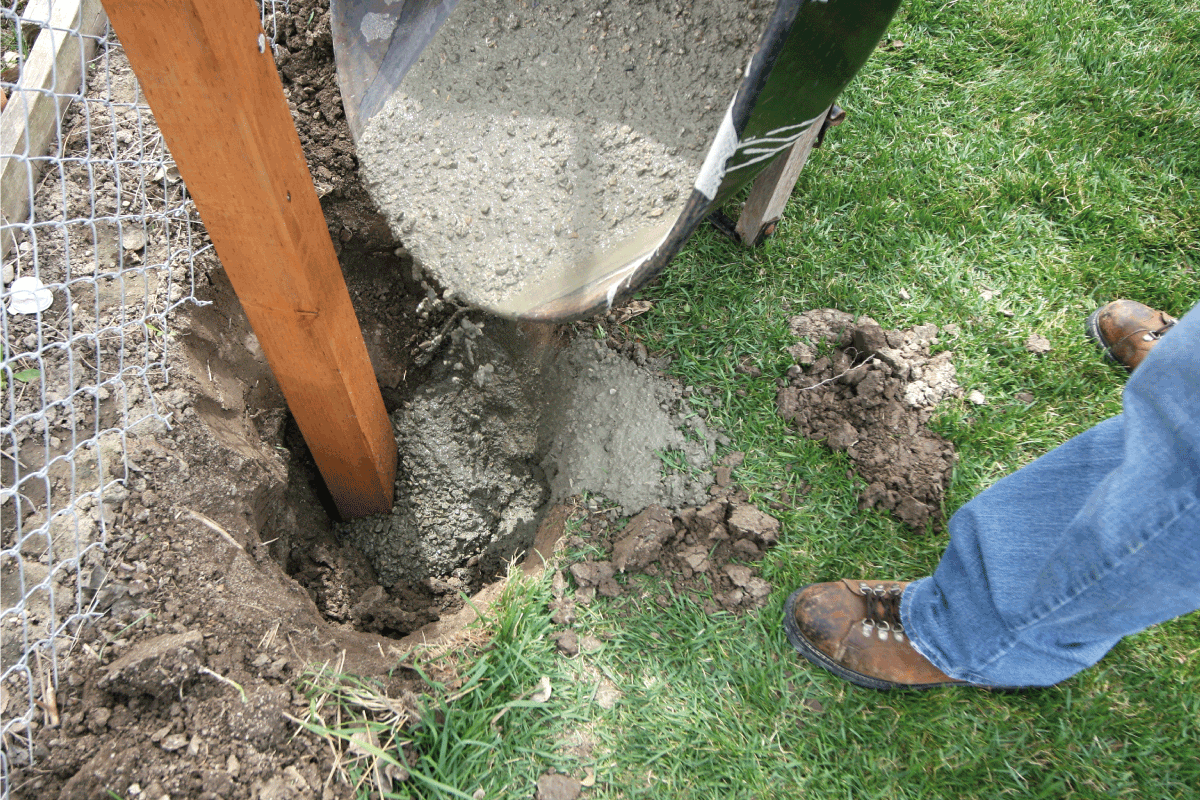
To Wrap Up
You can easily install fence posts by yourself but it is not advisable to install them in the rain as too much water can make the surface crack. It can also make the concrete weak. For a fence post to last longer, ensure that the concrete is made under the ideal temperature (40°F - 60°F) so the chemical reaction that makes it strong will not slow down.
If you enjoyed reading this post, here are similar articles you may like:
Why Do Concrete Fence Posts Crack? [And How To Fix That]


